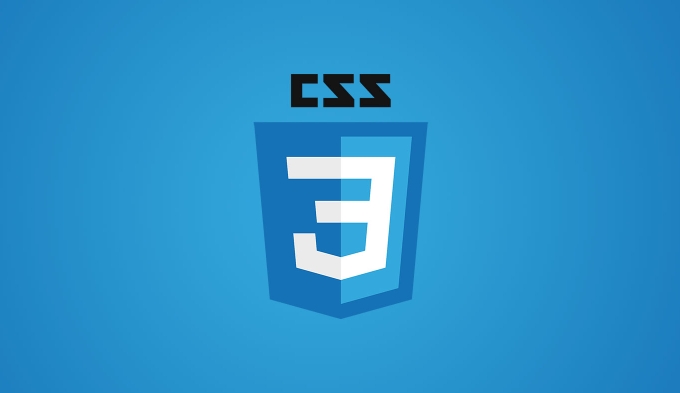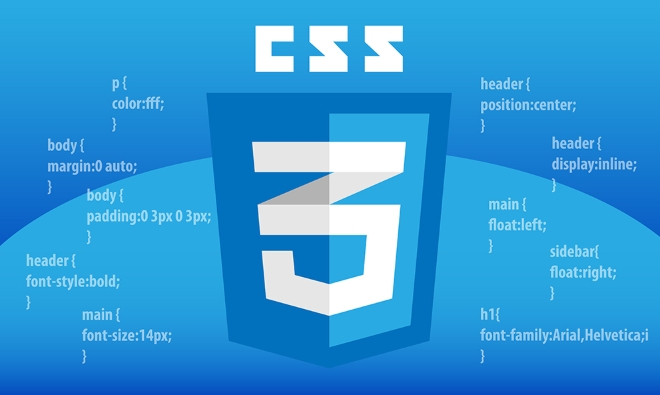CSS container queries allow styling based on a container's size, not the viewport. 2. Define a container using container-type: inline-size. 3. Use @container rules in child elements to apply styles. 4. Benefits include component-level responsiveness, reusability, and better design system support. 5. Name containers with container-name to avoid conflicts. 6. Container queries support width, height, aspect-ratio, and logical operators. 7. Supported in all major browsers as of 2024, with media queries as fallbacks for older browsers. 8. They enhance responsive design without replacing media queries but complement them for context-aware components.

CSS container queries are a modern layout feature that allows you to style elements based on the size of their container, rather than the viewport or parent element. This is a big step forward from traditional media queries, which only respond to the screen size. With container queries, components can be truly independent and adapt their appearance based on the space they’re actually given—making them ideal for reusable UI components like cards, grids, or widgets.

How container queries work
To use container queries, you first need to define a container in your CSS. This is done by using the container-type property (like inline-size, block-size, or size) on a parent element. Once an element is a container, its children can use @container rules to apply styles based on that container’s dimensions.
Here’s a basic example:

/* Step 1: Define a container */
.card-container {
container-type: inline-size;
}/* Step 2: Use a container query in a child component */
@container (min-width: 400px) {
.card {
display: flex;
}
}
@container (min-width: 600px) {
.card {
gap: 20px;
}
}<div class="card-container">
<article class="card">
<img src="/static/imghw/default1.png" data-src="image.jpg" class="lazy" alt="What are CSS container queries and how to use them?">
<div class="content">
<h3>Card Title</h3>
<p>Description goes here.</p>
</div>
</article>
</div>In this example, the .card layout changes when the .card-container reaches certain widths—regardless of the overall screen size.
Key benefits of container queries
- Component-level responsiveness: Components adapt based on their own container, not the whole page.
- Reusability: The same component can behave differently in different layouts (e.g., in a sidebar vs. a main grid).
- Better design system support: Designers and developers can build modular UIs that scale gracefully in any context.
Practical tips for using container queries
Use
container-type: inline-sizefor width-based queries (most common).
You can name containers using
container-name(or shorthandcontainer) to avoid conflicts:.sidebar { container-name: sidebar; container-type: inline-size; } @container sidebar (min-width: 300px) { .widget { flex-direction: row; } }Container queries support many of the same features as media queries, including
width,height,aspect-ratio, and logical operators (and,or,not).- Use media queries as fallbacks
- Avoid relying solely on container queries for critical layout
- Test layouts carefully across devices
Browser support and fallbacks
As of 2024, container queries are supported in all major modern browsers (Chrome, Edge, Firefox, Safari). However, for older browsers, you may need to:
You can check current support at caniuse.com.
Basically, container queries give you more control over responsive design at the component level—making it easier to build flexible, context-aware UIs without JavaScript. They’re not a replacement for media queries, but a powerful addition to your CSS toolkit.
The above is the detailed content of What are CSS container queries and how to use them?. For more information, please follow other related articles on the PHP Chinese website!

Hot AI Tools

Undress AI Tool
Undress images for free

Undresser.AI Undress
AI-powered app for creating realistic nude photos

AI Clothes Remover
Online AI tool for removing clothes from photos.

Clothoff.io
AI clothes remover

Video Face Swap
Swap faces in any video effortlessly with our completely free AI face swap tool!

Hot Article

Hot Tools

Notepad++7.3.1
Easy-to-use and free code editor

SublimeText3 Chinese version
Chinese version, very easy to use

Zend Studio 13.0.1
Powerful PHP integrated development environment

Dreamweaver CS6
Visual web development tools

SublimeText3 Mac version
God-level code editing software (SublimeText3)

Hot Topics
 CSS tutorial for creating loading spinners and animations
Jul 07, 2025 am 12:07 AM
CSS tutorial for creating loading spinners and animations
Jul 07, 2025 am 12:07 AM
There are three ways to create a CSS loading rotator: 1. Use the basic rotator of borders to achieve simple animation through HTML and CSS; 2. Use a custom rotator of multiple points to achieve the jump effect through different delay times; 3. Add a rotator in the button and switch classes through JavaScript to display the loading status. Each approach emphasizes the importance of design details such as color, size, accessibility and performance optimization to enhance the user experience.
 Addressing CSS Browser Compatibility issues and prefixes
Jul 07, 2025 am 01:44 AM
Addressing CSS Browser Compatibility issues and prefixes
Jul 07, 2025 am 01:44 AM
To deal with CSS browser compatibility and prefix issues, you need to understand the differences in browser support and use vendor prefixes reasonably. 1. Understand common problems such as Flexbox and Grid support, position:sticky invalid, and animation performance is different; 2. Check CanIuse confirmation feature support status; 3. Correctly use -webkit-, -moz-, -ms-, -o- and other manufacturer prefixes; 4. It is recommended to use Autoprefixer to automatically add prefixes; 5. Install PostCSS and configure browserslist to specify the target browser; 6. Automatically handle compatibility during construction; 7. Modernizr detection features can be used for old projects; 8. No need to pursue consistency of all browsers,
 What is the difference between display: inline, display: block, and display: inline-block?
Jul 11, 2025 am 03:25 AM
What is the difference between display: inline, display: block, and display: inline-block?
Jul 11, 2025 am 03:25 AM
Themaindifferencesbetweendisplay:inline,block,andinline-blockinHTML/CSSarelayoutbehavior,spaceusage,andstylingcontrol.1.Inlineelementsflowwithtext,don’tstartonnewlines,ignorewidth/height,andonlyapplyhorizontalpadding/margins—idealforinlinetextstyling
 Styling visited links differently with CSS
Jul 11, 2025 am 03:26 AM
Styling visited links differently with CSS
Jul 11, 2025 am 03:26 AM
Setting the style of links you have visited can improve the user experience, especially in content-intensive websites to help users navigate better. 1. Use CSS's: visited pseudo-class to define the style of the visited link, such as color changes; 2. Note that the browser only allows modification of some attributes due to privacy restrictions; 3. The color selection should be coordinated with the overall style to avoid abruptness; 4. The mobile terminal may not display this effect, and it is recommended to combine it with other visual prompts such as icon auxiliary logos.
 Creating custom shapes with css clip-path
Jul 09, 2025 am 01:29 AM
Creating custom shapes with css clip-path
Jul 09, 2025 am 01:29 AM
Use the clip-path attribute of CSS to crop elements into custom shapes, such as triangles, circular notches, polygons, etc., without relying on pictures or SVGs. Its advantages include: 1. Supports a variety of basic shapes such as circle, ellipse, polygon, etc.; 2. Responsive adjustment and adaptable to mobile terminals; 3. Easy to animation, and can be combined with hover or JavaScript to achieve dynamic effects; 4. It does not affect the layout flow, and only crops the display area. Common usages are such as circular clip-path:circle (50pxatcenter) and triangle clip-path:polygon (50%0%, 100 0%, 0 0%). Notice
 What is the CSS Painting API?
Jul 04, 2025 am 02:16 AM
What is the CSS Painting API?
Jul 04, 2025 am 02:16 AM
TheCSSPaintingAPIenablesdynamicimagegenerationinCSSusingJavaScript.1.DeveloperscreateaPaintWorkletclasswithapaint()method.2.TheyregisteritviaregisterPaint().3.ThecustompaintfunctionisthenusedinCSSpropertieslikebackground-image.Thisallowsfordynamicvis
 How to create responsive images using CSS?
Jul 15, 2025 am 01:10 AM
How to create responsive images using CSS?
Jul 15, 2025 am 01:10 AM
To create responsive images using CSS, it can be mainly achieved through the following methods: 1. Use max-width:100% and height:auto to allow the image to adapt to the container width while maintaining the proportion; 2. Use HTML's srcset and sizes attributes to intelligently load the image sources adapted to different screens; 3. Use object-fit and object-position to control image cropping and focus display. Together, these methods ensure that the images are presented clearly and beautifully on different devices.
 What are common CSS browser inconsistencies?
Jul 26, 2025 am 07:04 AM
What are common CSS browser inconsistencies?
Jul 26, 2025 am 07:04 AM
Different browsers have differences in CSS parsing, resulting in inconsistent display effects, mainly including the default style difference, box model calculation method, Flexbox and Grid layout support level, and inconsistent behavior of certain CSS attributes. 1. The default style processing is inconsistent. The solution is to use CSSReset or Normalize.css to unify the initial style; 2. The box model calculation method of the old version of IE is different. It is recommended to use box-sizing:border-box in a unified manner; 3. Flexbox and Grid perform differently in edge cases or in old versions. More tests and use Autoprefixer; 4. Some CSS attribute behaviors are inconsistent. CanIuse must be consulted and downgraded.







